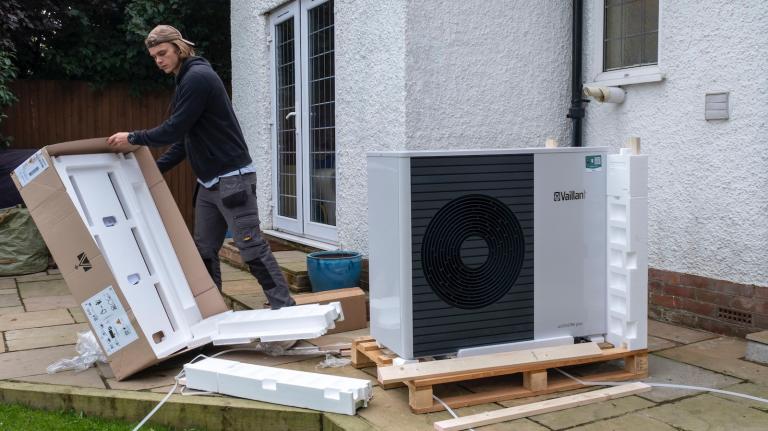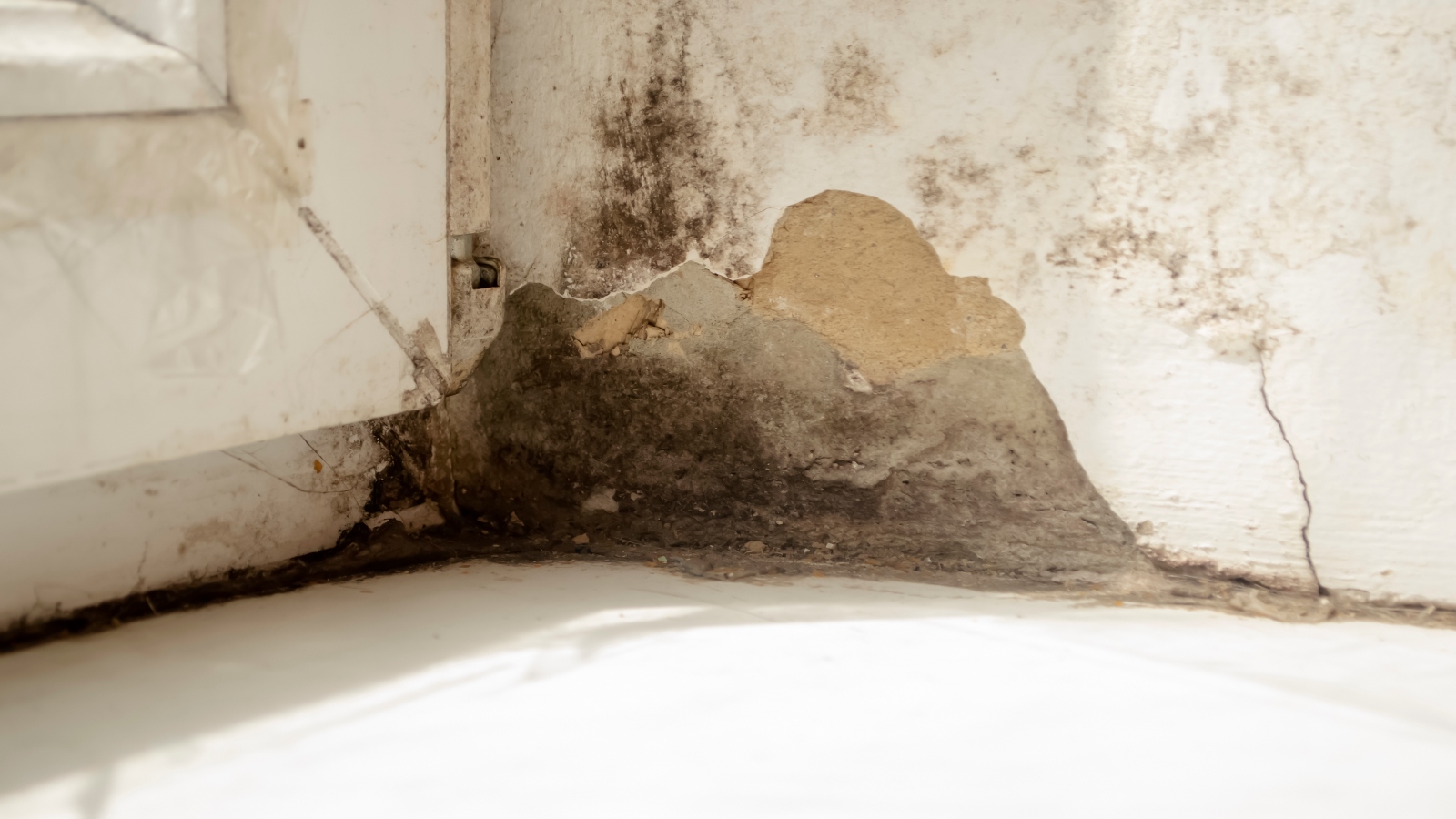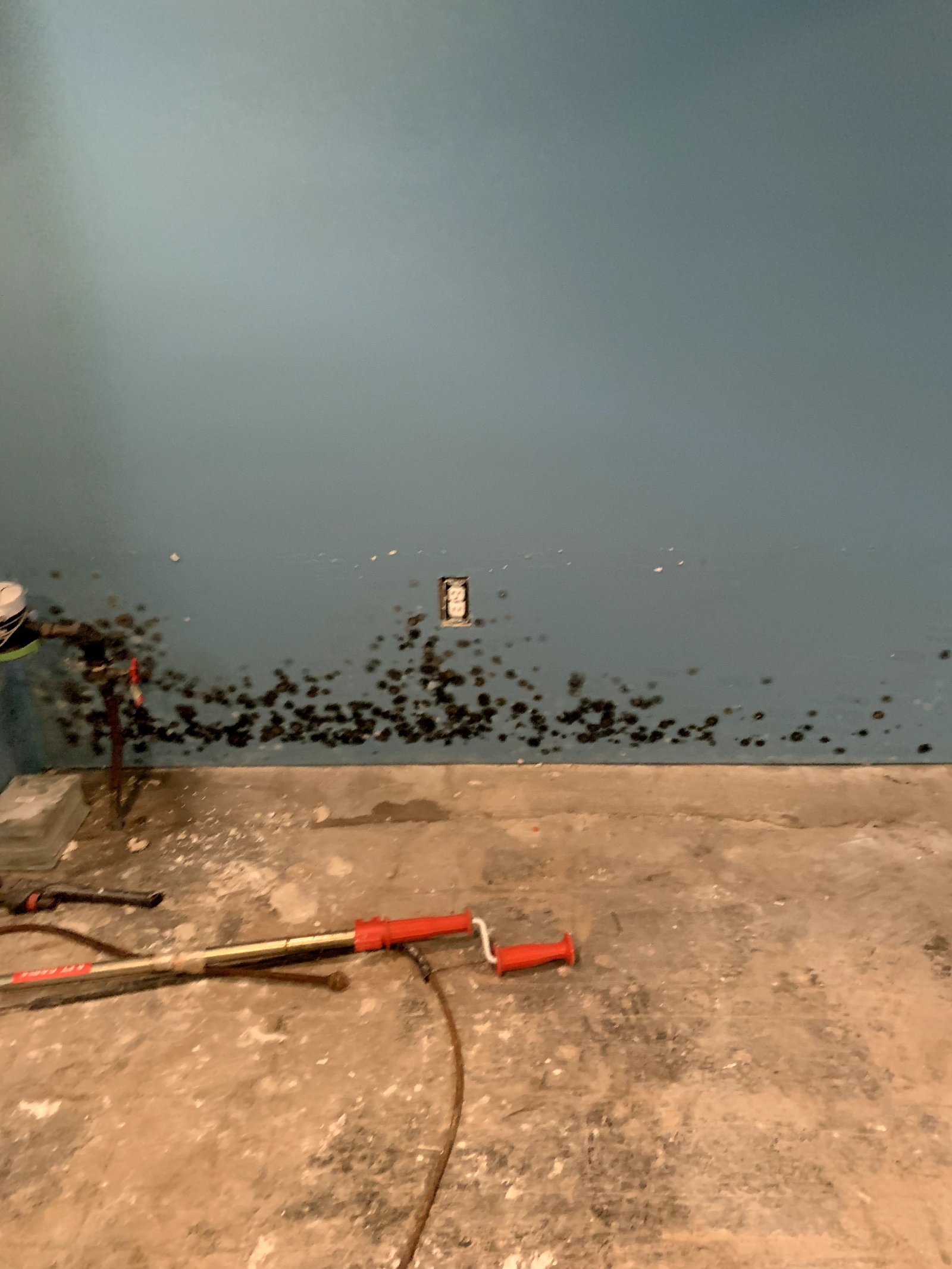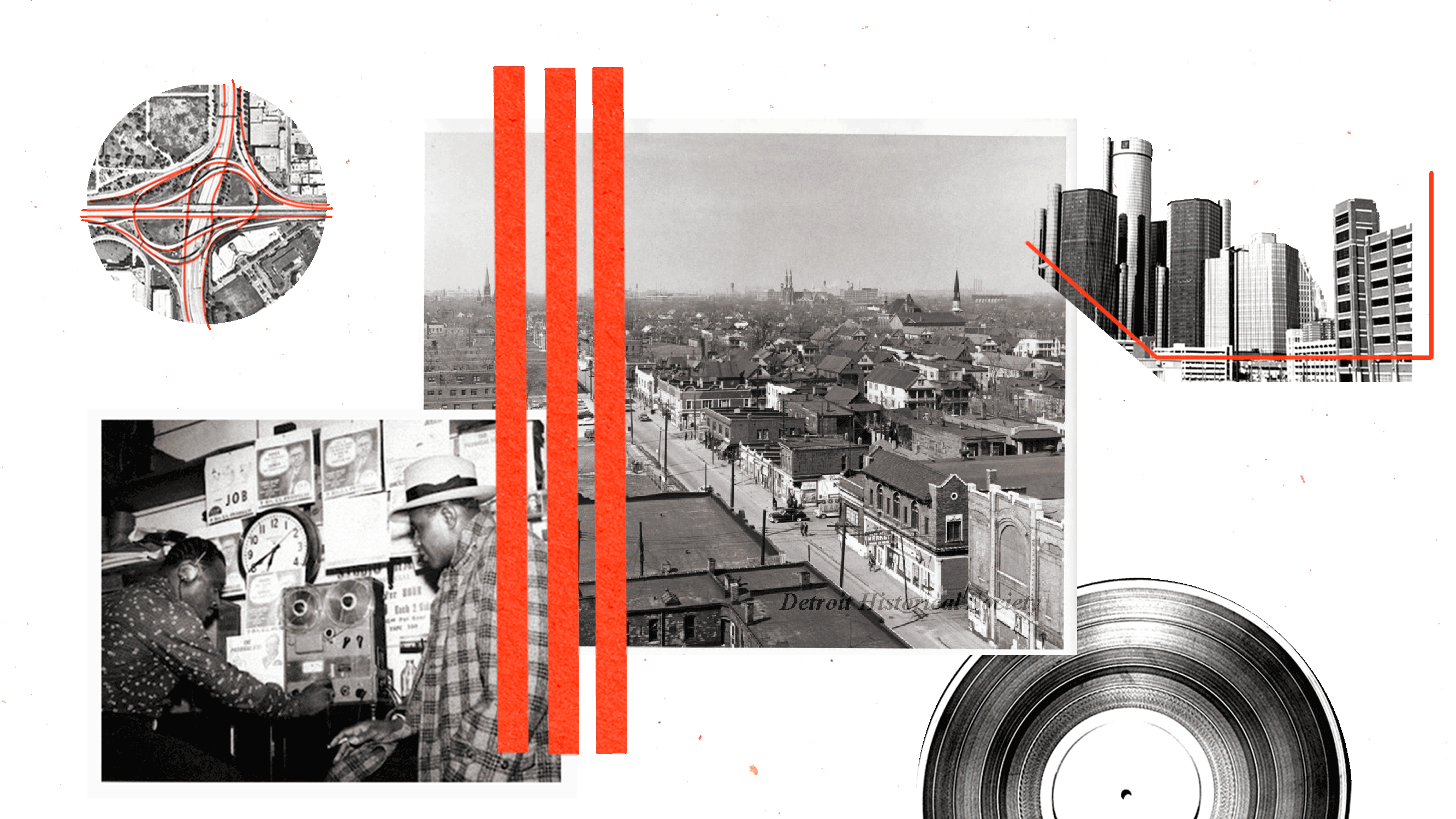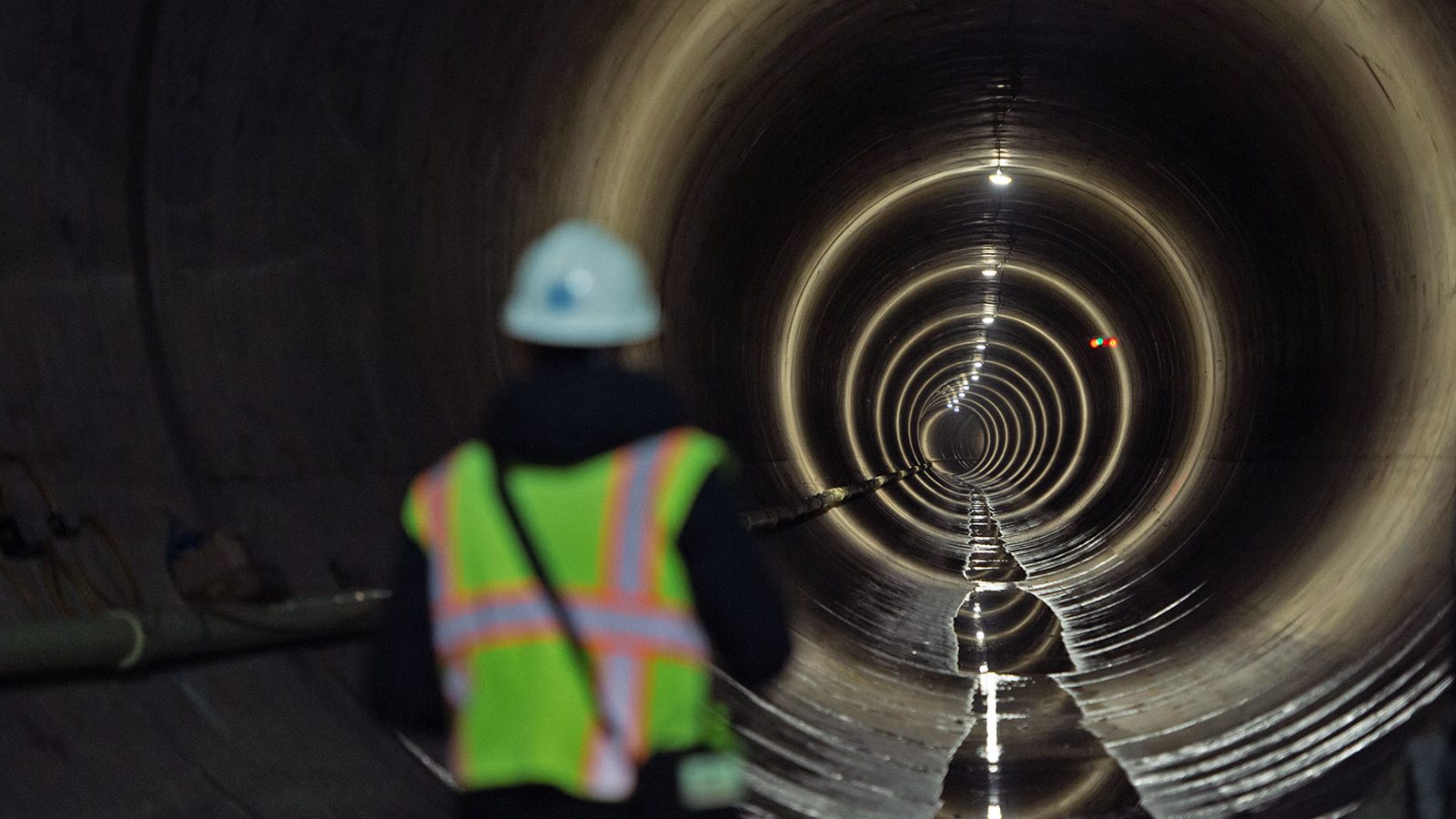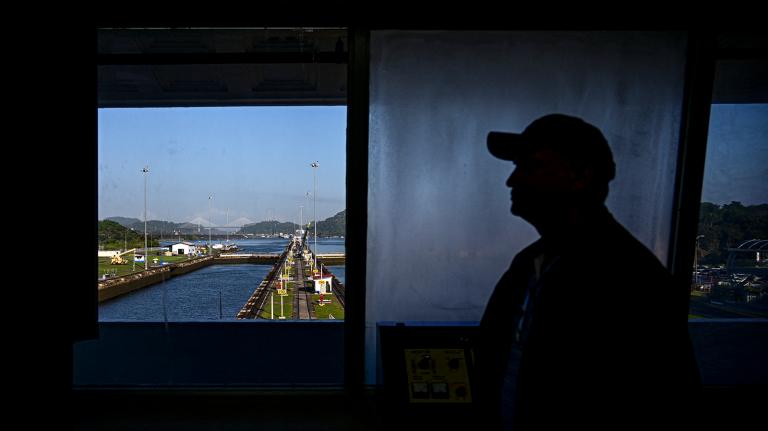This story was produced through a collaboration between Climate Central, BridgeDetroit, and Grist.
Wilma Price was sleeping in her basement bedroom in 2021 when she woke up to a cacophony of noise, including an alarm coming from her sump pump, a device meant to prevent basement flooding.
As she sat up in bed she saw her freezer and its contents floating by on several inches of water. The bedroom of her home in Detroit’s Jefferson Chalmers neighborhood was quickly flooding with water coming in from the toilet and shower.
“I thought I was dreaming,” said Price, 69. “It was gushing out of my toilet like a geyser, it was coming out of my shower. … I just couldn’t believe my eyes. It was so terrifying.”
The alarm she heard was the crying sound of her sump pump failing as approximately four feet of water accumulated, almost entirely engulfing the stairs from her basement and destroying computers, furniture, appliances, and most tragically, photos of her siblings, parents, and husband, all of whom have died. After a few days the water receded, but black mold — a toxic fungus — developed.
Severe basement flooding in 2021 left toxic black mold in Wilma Price’s home in the Jefferson Chalmers neighborhood. To remediate the mold, parts of the walls were ripped out.
As fossil fuel pollution traps heat, flooding is intensifying and disasters are becoming more frequent and more intense. The floods are wreaking financial damages, and they’re exacerbating health hazards as flooded streets and basements foster mold and release pathogens from raw sewage. In Rust Belt cities like Detroit with combined sewer and rainwater systems, untreated sewage can back up into streets and homes when pipes become overwhelmed with stormwater.
Price paid thousands of dollars to eradicate the mold by ripping out the floors, several feet of her walls, and all of her new bathroom fixtures.
Sometime this spring, Price moved the winter coats she had stored in a closet on the home’s first floor and found black mold crawling up about a foot of the wall. Then she found it in a second room on the opposite side of the house.
Price wonders where else the mold might be silently growing from that day in 2021.
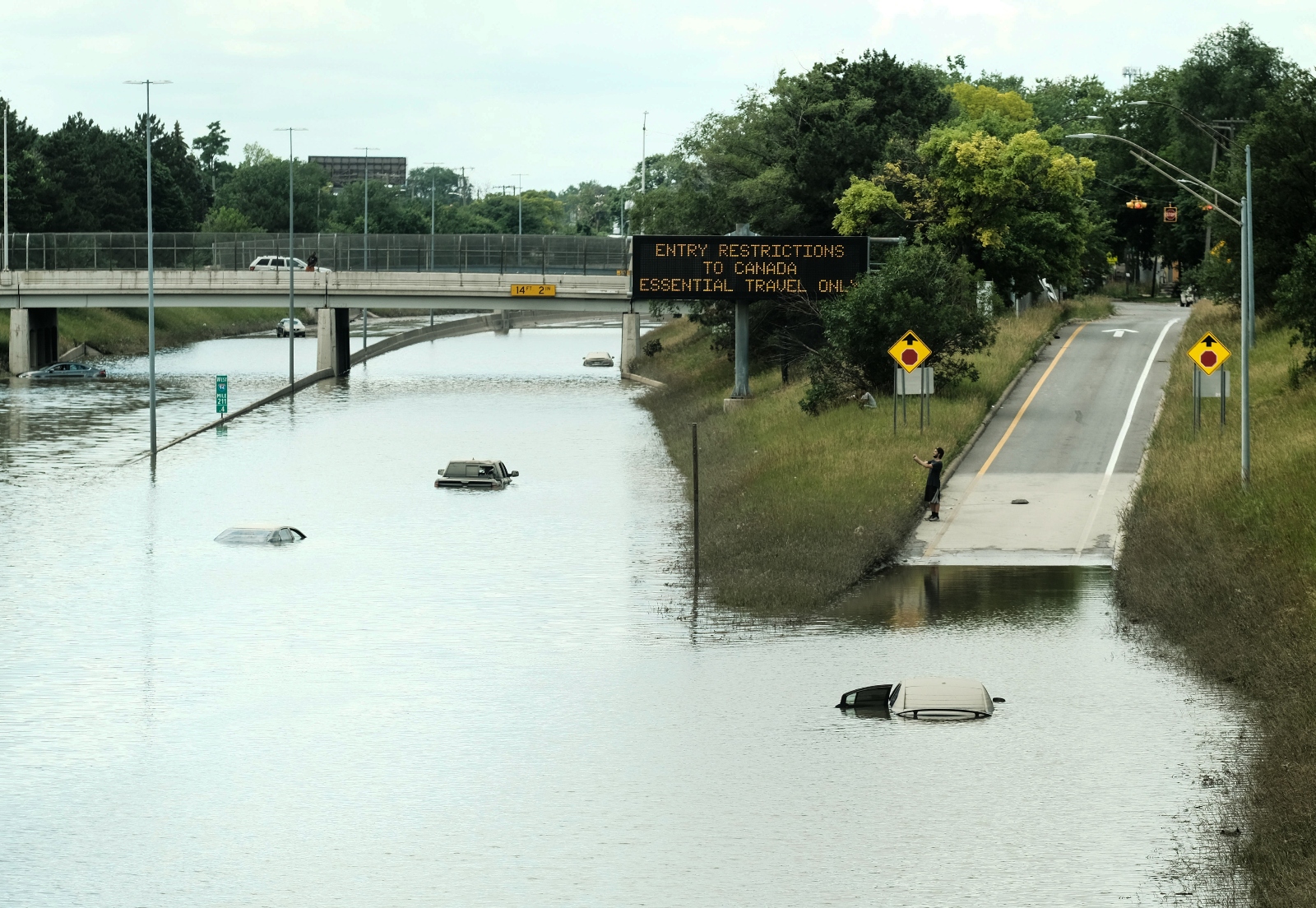
Matthew Hatcher / SOPA Images / LightRocket via Getty Images
Extreme rainfall events like Detroit’s historic flood in 2021 are growing more common because of climate change. The floods of years past will likely be dwarfed by the deluges of the future, powered by a warmer atmosphere that’s able to hold more moisture, climate scientists say.
“It doesn’t take much imagination to think about how serious this problem is, especially for children born in Detroit and living in those environments,” said Peter Larson, a postdoctoral researcher at the University of Michigan and one of the lead authors on a 2021 study, published in the International Journal of Environmental Research and Public Health, that found more than half of almost 4,000 Detroit homes surveyed had experienced recurrent flooding between 2012 and 2020.
“They face lifelong problems from asthma,” Larson said.
Among the Detroit homes included in the study, 84 percent that had flooded in the past were found to have mold in the basement. An additional 55.4 percent of homes that had not flooded during those years still had moldy basements — underscoring the fact that more frequent, climate-induced rainfall can pose problems even for homes that haven’t flooded, because with more rain comes more moisture.

Detroit received more than 25,000 calls on June 25, 2021, when six to eight inches of rain washed across the city over two days, leading to disaster declarations in four Detroit-area counties and 67,000 damage claims with the Federal Emergency Management Agency. About 24,000 damage claims were also filed with the regional water authority in Metro Detroit, all of which were denied because water officials deemed widespread basement flooding to be inevitable. Several pump stations that move water out of the east side of Detroit failed that day due to electrical issues. Still, authorities said there was just too much rain for the system to handle.
Following the flood, President Joe Biden declared an emergency for the state of Michigan, opening up more federal funding for flood victims. Before that, in 2014, four to six inches of rain left Detroit with $1.8 billion in direct flood damages, according to the National Weather Service. Then again in 2016, 2019, and 2020, major rainfall caused severe flooding in Detroit.
More frequent, climate-induced rainfall can pose problems even for homes that haven’t flooded, because with more rain comes more moisture.
“The last flood was the worst of them all. It was devastating,” said LeJuan Council, a Detroit resident whose home has flooded. Council lives in the Jefferson Chalmers neighborhood, which has experienced some of the worst effects of Detroit flooding because of its low elevation, its proximity to the Detroit River, and the way the sewer system is designed. “We are all very clearly in a depressing situation around this time of year — you should typically be able to enjoy the sun, but summer rain is becoming violent for us.”
This has profoundly concerning health implications for Detroit residents.
“What you have is a situation where residents are facing just an enormous amount of potential challenges because of this,” said Lyke Thompson, director of Wayne State University’s Center for Urban Studies and a mold researcher. “A number of older and younger adults in that neighborhood already have asthma, and we have found from a larger study … an association between flooding and asthma occurrence in Detroit.
“The mold was the major thing that was still there months after [the 2021 flood]. And we still are going into homes and finding mold in that neighborhood,” he said.
Other research conducted after extreme weather events, including Hurricane Katrina in 2005, has shown high mold levels indoors can lead to or exacerbate a host of health problems, including asthma, respiratory infections, bronchitis, allergies, and even neurological damage. A number of studies have shown that mold can even increase the risk of developing asthma for the first time in both children and adults.
This is particularly concerning in Detroit, which has some of the highest asthma rates in the country. Larson and other researchers found a positive association between mold growth and asthma in the thousands of Detroit homes they surveyed: A whopping 74.4 percent of households that had flooded in recent years reported having at least one adult in the home who had been diagnosed with asthma.
“We’re seeing an overburdened set of communities who keep experiencing a lot of the local industry and commercial truck traffic, and you just keep adding these layers on top,” said Natalie Sampson, a professor of public health at the University of Michigan’s College of Education, Health and Human Services, and another author on the 2021 study. “Mold from flooding is just one more contributor that can really spark asthma symptoms, that’s for sure.”
A follow-up draft paper from Larson and other researchers that has not yet been published mapped crowdsourced data from a municipal hotline operated by Detroit’s sewer department to visualize and understand where flooding was most pronounced in the city. It found that virtually everyone in Detroit is at risk of flooding due to increasing frequency and intensity of heavy rainfall, proximity to the Detroit River, the city’s low elevation, poor housing conditions, and Detroit’s combined sewer-and-stormwater outflow system that puts people at particular risk for flooded basements.
Although flood risk was found everywhere in Detroit, the draft study — like previous studies before it — found that the highest density of calls made to the city flood hotline in 2021 were clustered near the east side of the city, bordering Grosse Pointe, and on the southwest side of the city near Dearborn.
The city of Detroit at first declined to provide Climate Central, BridgeDetroit, and Grist with data showing the locations of these calls without paying an exorbitant amount (more than $13,000). The city later provided a partially redacted list of these calls for one day from 2021 that excluded full addresses of the homes where the calls originated.
Detroit is filled with old and abandoned homes — and these can be fertile ground for mold to grow after a flood.
Low-income and Black households are also much more likely to call the city due to flooding, according to researchers who’ve studied Detroit. Black families are meanwhile much more likely to live in substandard housing with cracks in the foundation, walls, or basement windows. These issues allow outside moisture to seep in through gaps in the foundation and roof. And having gutters that don’t drain water away from the house properly is a problem, too.
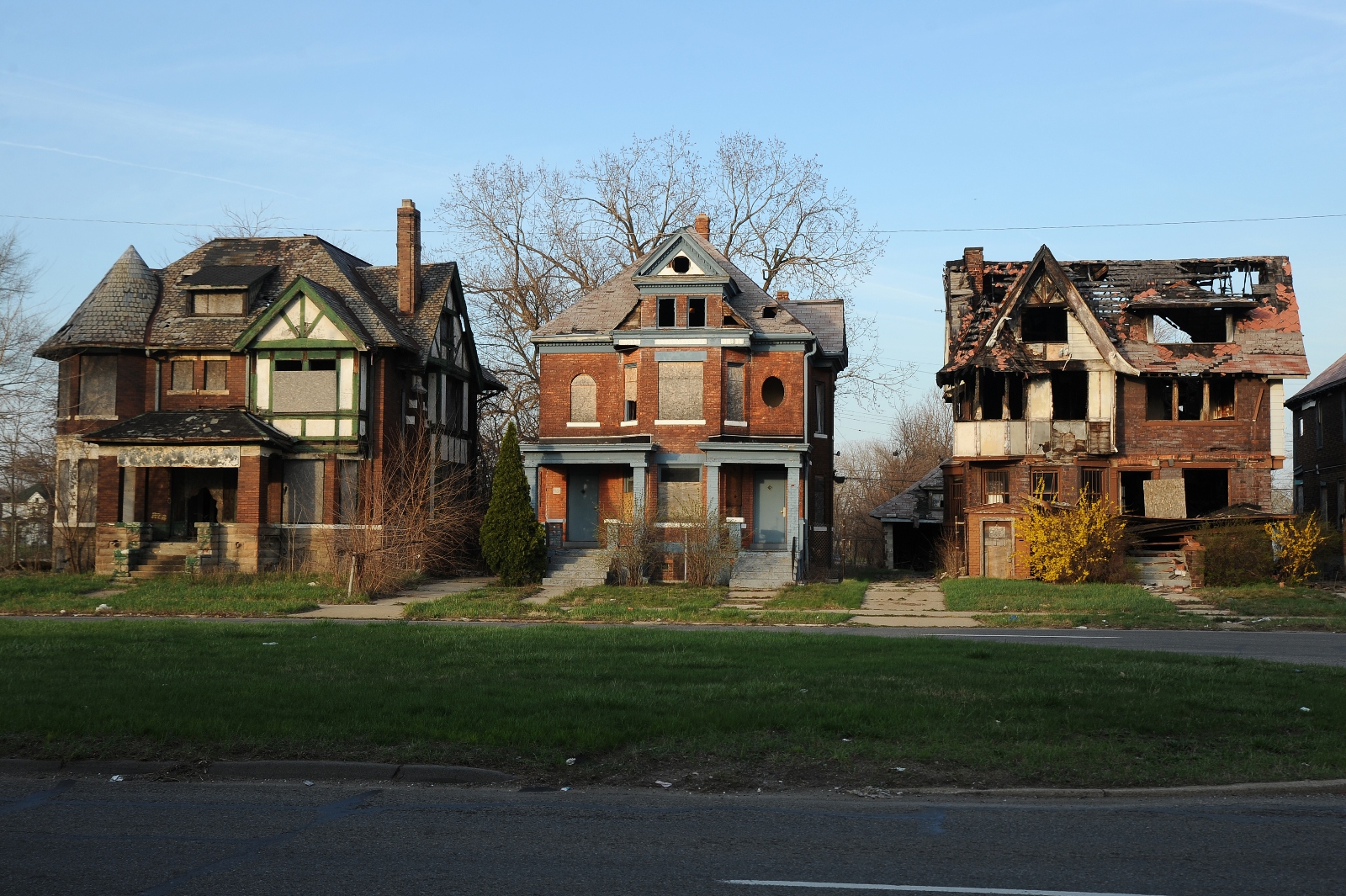
“We were seeing flooding in homes that weren’t near major bodies of water,” said Carina Gronlund, an epidemiologist at the University of Michigan and one of the authors in the 2021 study on recurrent household flooding in Detroit. “We also saw in a more northern section of the city a hotspot of flooding, and that is not in a low-lying area of the city or along a major body of water. So this really points to housing conditions as potentially being a major driver of basement flooding in Detroit.”
But Detroit’s combined sewer system is also a major problem for residents, experts say. And it’s unlikely to change.
According to the last cost estimate, about four years ago, from the Detroit Water and Sewerage Department, or DWSD, it would cost roughly $20 billion to decouple the rainwater and sewage systems — a massive infrastructure project that would involve constructing new pipes and disrupting the water service, and would likely “take decades to complete,” DWSD spokesman Bryan Peckinpaugh said in an email. (To put things in perspective, the entire 2022 state budget was about $76 billion.)
“This is not an option in our view,” Peckinpaugh said. “DWSD is determining opportunities in parts of the city to redirect the stormwater through green stormwater infrastructure projects similar to the work well under way in the Far West neighborhood, as well as collaborate with MDOT [the Michigan Department of Transportation] to capture the freeway rain and snowmelt, and directly discharge it into the Detroit and Rouge rivers. This work will increase the capacity in the combined sewer system to handle wet weather events.”
The city is also working with a variety of agencies on projects to improve the stormwater system, including infrastructure upgrades, installing special valves that are supposed to prevent sewage from backing up in people’s basements in 11 flood-prone neighborhoods, and installing large bioretention basins meant to trap water and stop it from flooding people’s homes.
So far, Detroit has installed 382 backflow valves in flood-prone neighborhoods, completing 60 percent of homes in the first phase, according to DWSD.
DWSD director Gary Brown declined an interview for this story.
Many of these fixes are workarounds to the problem that Detroit is an exceedingly flat city, and the soil is predominantly clay. This leads to pools of water that don’t soak into the ground, says University of Michigan landscape architecture professor Joan Iverson Nassauer.
“When rain falls or snow melts in Detroit, it really doesn’t have anywhere to go because 15,000 to 20,000 years ago, nearly all of what is Detroit today was a glacial lake,” she said.
One Detroit neighborhood in particular has seen some of the worst effects of flooding: Jefferson Chalmers.
The low-lying, east side neighborhood boasts 160 acres of waterfront parks, canals, and plenty of opportunities for anglers and boaters. It was built at the site of a former swamp, next to the river, and the area’s terrain still causes water to pool there. A number of homeowners live directly on the Detroit River canals, which swell when it rains. The area is also on the receiving end of a sewage pipeline connected to northern-suburb water systems — so when there’s major flooding, Jefferson Chalmers residents can find their basements full of combined sewage and stormwater from their northern neighbors.
The results can be devastating for residents — not just for their health, but also financially.

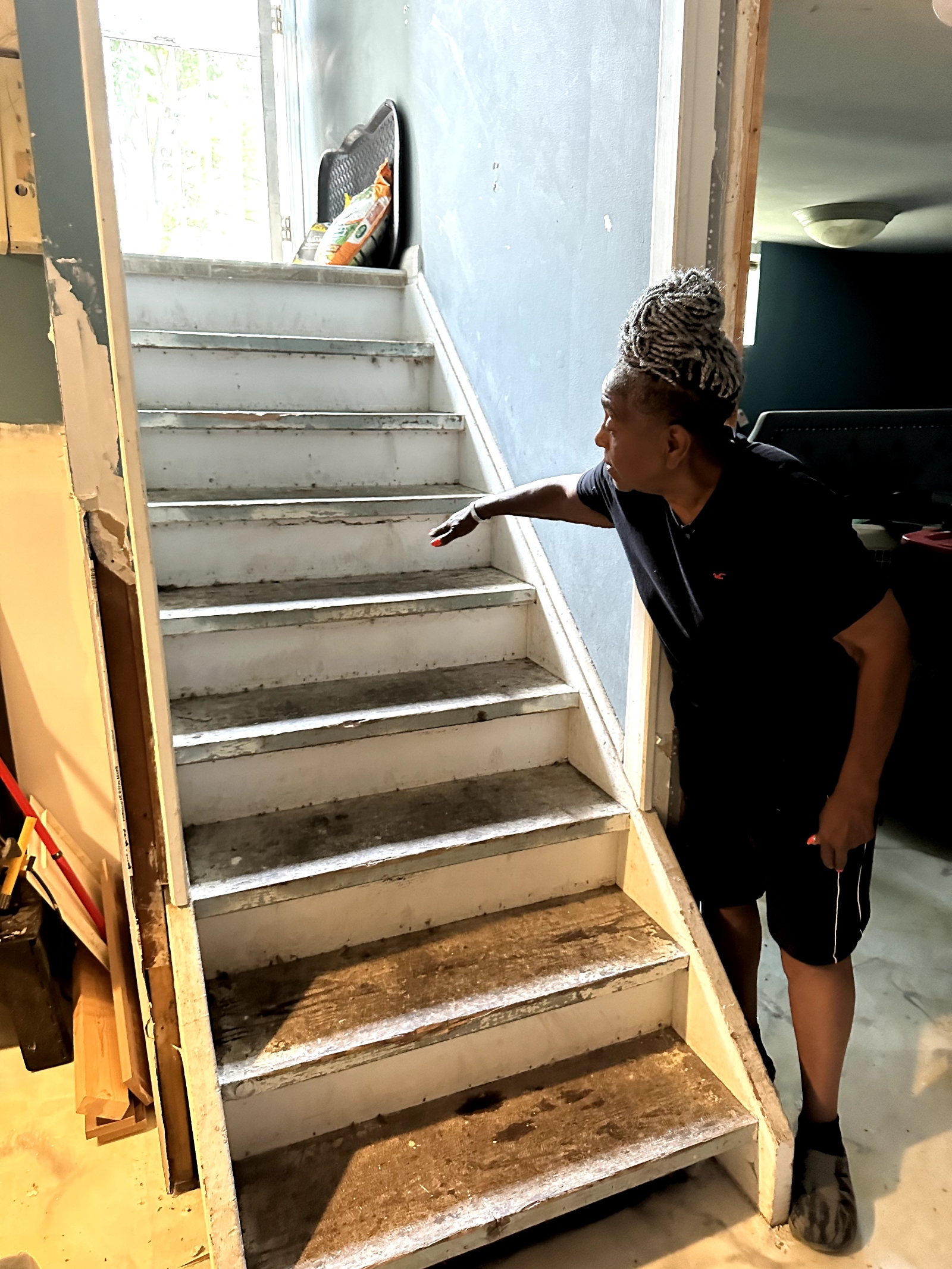

Wilma Price’s basement flooded in 2021, destroying appliances, furniture, electronics, and family photos. Price (upper right) points to her basement stairs, where floodwaters rose several feet. She estimates the damage over the last decade has cost her $100,000 in lost property and flood cleanup.
Price estimates that in recent years, flooding has cost her upwards of $100,000, which has been spent on replacing lost items, mold cleanup, and repairs. Though she’s lived in her home on the canal since 1990, she said her house never flooded before 2014. During the 2021 flood, she lost the most. “I cried my eyes out. I could not believe that I had lost so much stuff,” she said.
After the 2021 flood, she paid $3,200 to Servpro, a local water-damage restoration company, to clean up her basement.
“I thought that they had killed most of the mold,” said Price. But as she recently discovered in her closet, not all of the mold was eradicated. She believes it is contributing to new health issues. Though she hasn’t been diagnosed with asthma, in the last year, Price has developed breathing problems, a small cough, and a constant throat irritation prompting her to always carry throat lozenges.
“It makes your skin crawl. I have been in homes where it looks like someone has tacked black velvet on the walls,” said Mary Lloyd, a flood consultant for Jefferson East Inc., a Detroit nonprofit that works with low-income residents to help with flood preparedness and repairs after storms. “In a lesser situation it’s speckled, like a splash.”
Lloyd says almost every house that flooded across Detroit in 2014 had mold. In 2016, gray, contaminated water entered Detroit homes again — and mold grew again. Some Detroit homes have had mold three or four times in the last decade, she said.
“Mold grows in damp, dark places,” she said. “If it isn’t cleaned properly, then it multiplies and grows and consumes the space that it’s in.”
For the last decade, Lloyd has led groups of volunteers to clean up mold in residents’ homes. Before volunteers are dispatched she sends them a picture of the house in part to prepare them emotionally. Then a team of up to 25 volunteers donning hazmat suits, respirator masks, and gloves get to work remediating the mold. Large sections of the walls may be cut out, the studs removed, or the dry wall taken out. They take frequent breaks and avoid going into other parts of the home. There’s a persistent odor while they work, both from the residual sewage left in the basement and from the mold itself.
“It makes your skin crawl. I have been in homes where it looks like someone has tacked black velvet on the walls.”
— Mary Lloyd, flood consultant
“If I spent too much time in a basement without a mask and without taking breaks, my tongue would swell,” Lloyd said.
After cleanup, volunteers give residents dehumidifiers and indoor air purifiers to help clear the tiny microscopic mold spores that can linger and contribute to bad air quality. With additional funding, they’re also able to move furnaces, water heaters, and electrical systems up from the basements of residents’ homes to protect them from future flooding.
The nonprofit has recently refocused their home-repair program to address ongoing flooding by making residents’ homes more resilient to climate change-driven disasters. So far, the group has surveyed a few hundred homes, said Joshua Elling, Jefferson East’s executive director. But they have a backlog of 270 residents waiting for repairs in the flood-prone Jefferson Chalmers neighborhood.
Volunteers with Jefferson East aren’t the only ones tackling Detroit’s frequent flooding. Wayne State University is also helping fix up Detroit homes and boost climate resilience. With the help of AmeriCorps, small teams of young people are dispatched to survey homes for flood and mold-damage potential. Once the homes are identified, the teams equip residents with the fixes they need to stave off or better handle flooding, such as planting rain gardens and providing air purifiers. Wayne State researchers are also surveying homes for mold concentrations, data that Jefferson East will use to inform a $1.8 million resilient-homes program.
Lyke Thompson, the Wayne State mold researcher, worked with chemist Judy Westrick to take samples from structures in Jefferson Chalmers for a pilot study. They’re applying for grants in the hopes of conducting more extensive research on the neighborhood’s mold problem.
They surveyed basements in a small cross section of 20 houses and found pervasive mold in all but two of the homes. Corroborating previous research done in Detroit, “We concluded from this study that, yes, flooded basements are more likely to have mold,” Westrick said.
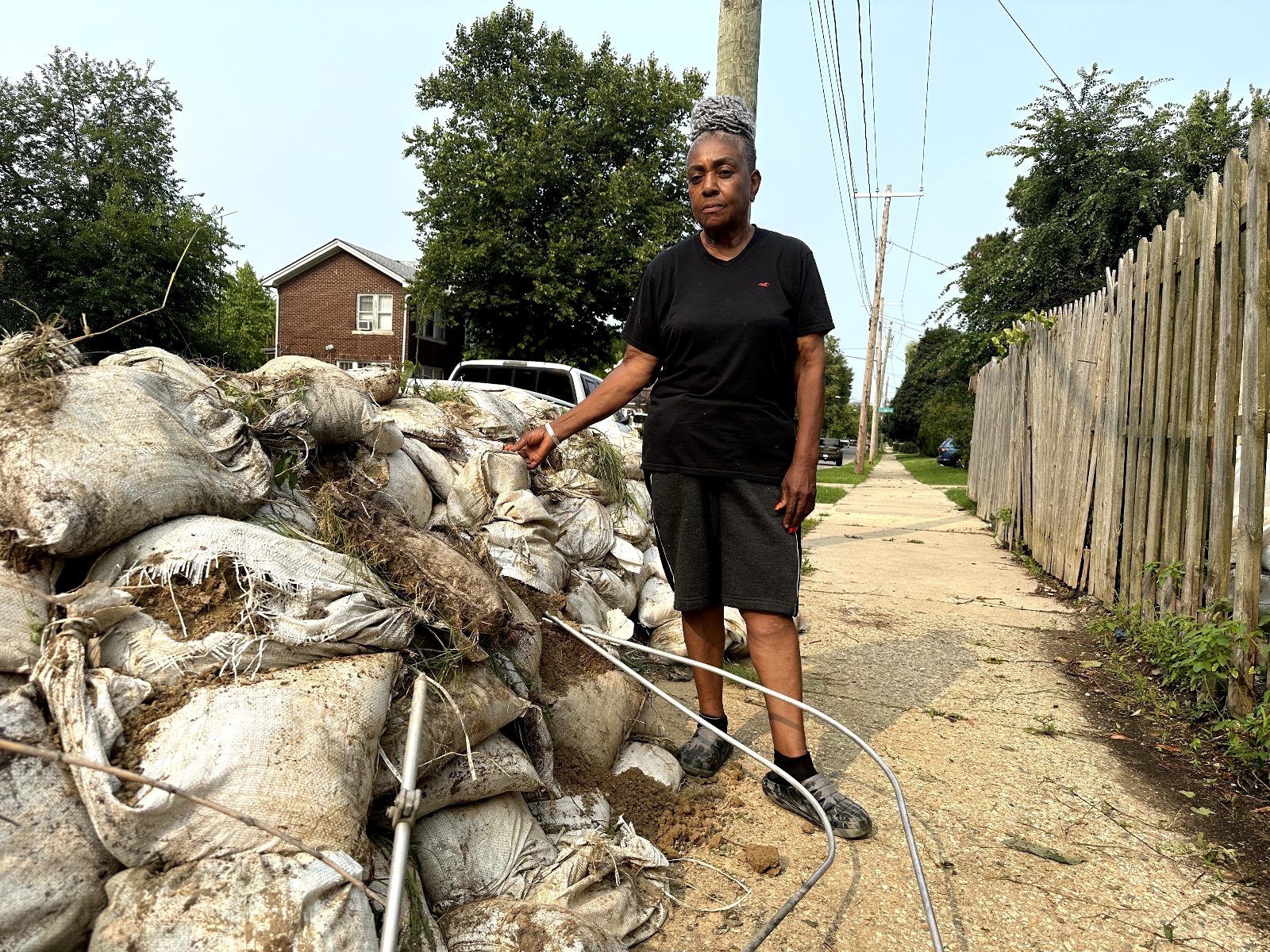
Detroit’s combined sewer-and-wastewater system is aging and in disrepair. Pipes taking in drinking water leak, and pipes taking stormwater away also leak, Nassauer said.
“You have sort of a perfect storm of events that makes Detroit vulnerable to pluvial flooding,” she added.
To address that, Detroit is working on two major projects meant to redirect and trap water in special areas to reduce flooding. That includes a project on the far west side of Detroit for which construction began last year. It’s supposed to remove 100 million gallons of stormwater annually by the time construction is finished in 2027, redirecting rain and snow runoff to two bioretention basins connected to the Rouge River, according to the city.
Other initiatives include the Fenkell stormwater projects meant to use 50 acres of land near the northwest border of Detroit in the Brightmoor neighborhood to reduce street flooding and basement backups, funded by $1.6 million in grants. Construction is slated to begin in 2024.
Nassauer said she thinks it’s possible that green infrastructure projects like this could help the city endure the floods to come without resorting to “the almost unimaginable cost of separating the sewer system.”
Detroit is also working on fixing aging pipes in the stormwater system, according to DWSD’s Peckinpaugh. In 2022, the department cleaned 2,500 stormwater-catch basins and 250 miles of sewers, and the city is “evaluating potential legal actions” to enforce sewage volume limits in place in northern suburbs — another factor behind the severe flooding in Jefferson Chalmers. Community advocates argue that the city has not enforced existing limits, much to the detriment of Detroiters in that neighborhood.
In the meantime, climate scientists say flooding and the health problems associated with it are likely to get worse in the future.
“This intensification of precipitation is occurring much faster than we thought it would,” said Jonathan Overpeck, dean of the University of Michigan’s School for Environment and Sustainability.
According to Overpeck, scientists already have witnessed the heaviest storms occur much more frequently than records indicate they did in the early 19th century. And it will likely continue to get worse — “almost for sure [doubling] the impact that we’ve seen already. And that will just completely overwhelm our infrastructure,” Overpeck added.
It’s that future that engineers should be planning for. But some critics argue that Detroit — and every other major city planning sewer upgrades to handle more climate-induced rainwater — is using outdated data to make those plans.
A DWSD department’s spokesman did not answer a question about whether Detroit uses future projected rainfall data, or just past rainfall data.
“Precipitation numbers are going up, up, up, up, up. So you really need to design your stormwater system for the 100-year storm 50 years from now,” said Rob Moore, a senior policy analyst for the Natural Resources Defense Council.
“Municipalities, states across the country are wasting millions, if not billions of dollars building infrastructure that’s not designed for their future needs,” Moore continued. “It’s wasteful. It’s financially irresponsible. It’s indefensible. We’re building things that are designed to fail, and we gleefully spend a lot of money on it.”
Many Detroit residents share the sentiment that a large part of the cause of the city’s ongoing flooding issues is due to its aging, inadequate water system.
“Their infrastructure needs a lot of work to work, and they need to address that,” said Jefferson Chalmers resident Price, who always planned to leave her house to her son. “It was really a failure on their part,” she said, adding that she doesn’t know if she’ll be able to pass down the house after all, if it keeps flooding.
Price said she feels abandoned by the very same city she served for decades as a police officer and that her mother served as a nurse for the health department. She said she loves Detroit and does what she can for her neighborhood and community, even in retirement. But she doesn’t feel like the city reciprocates the care.
“The city dumped on me,” Price said. “They just did a cover-up and they just washed their hands, and they’re moving on.”
